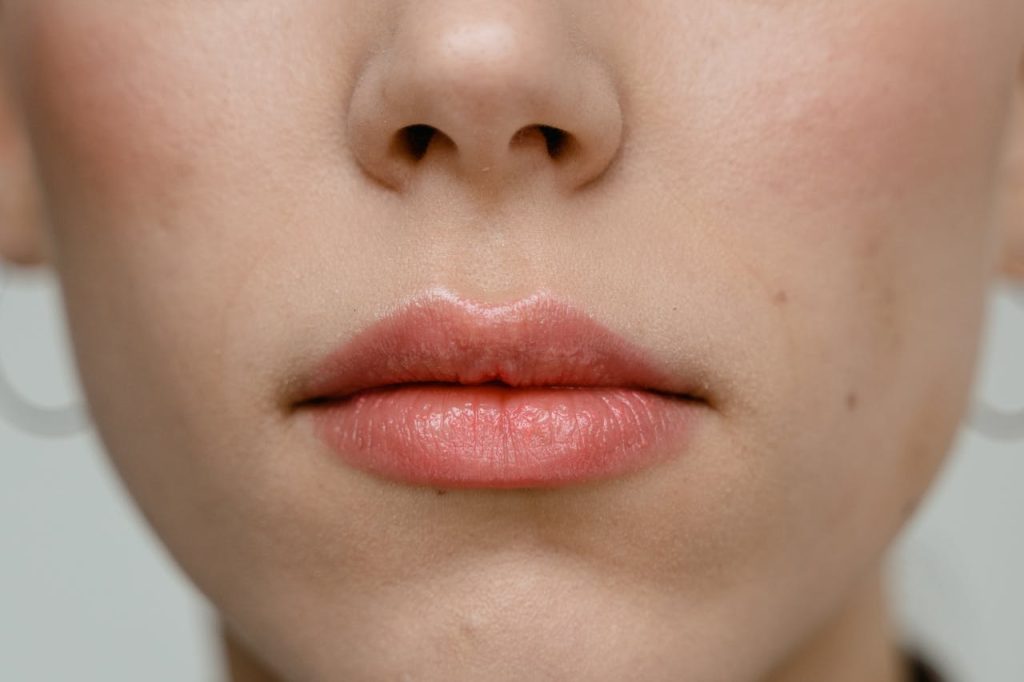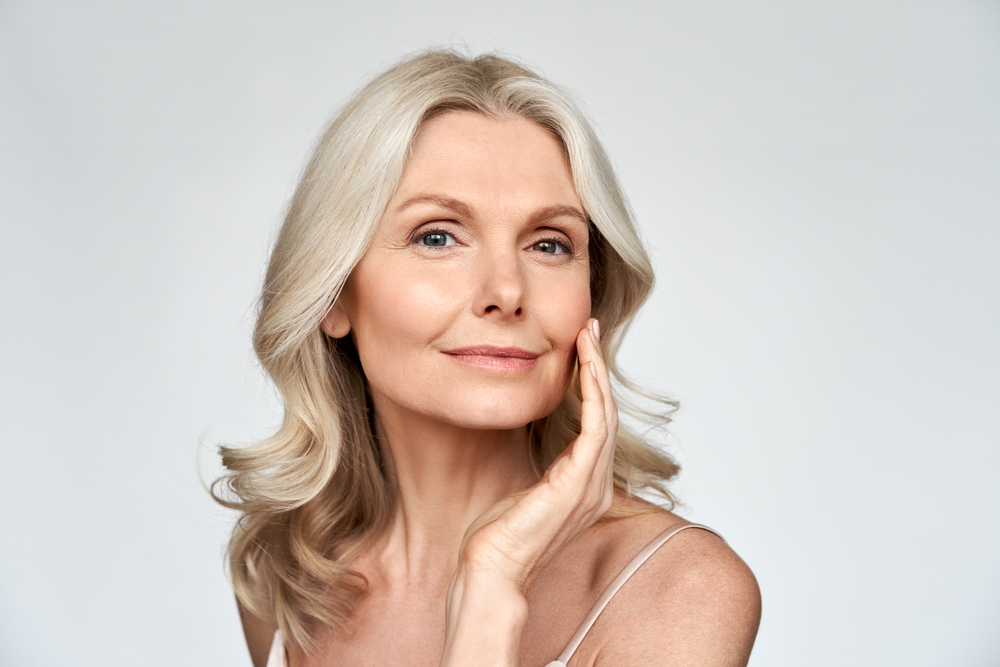Your cart is currently empty!
If you’re a woman with chin whiskers, pay attention. Here’s what it means

You’re washing your face or catching a glimpse in the mirror when you notice it: a wiry little hair sprouting from your chin. For some women, it’s an occasional nuisance plucked away without much thought. For others, it becomes a recurring frustration or even a source of quiet shame. What makes this tiny strand of hair so emotionally charged is not the hair itself, but what it represents. In a culture where smooth, hair-free skin is often tied to femininity, discovering whiskers in unexpected places can feel like an assault on identity.
Yet the truth is that chin hair in women is far from unusual. It can be a normal part of aging, a reflection of hormonal shifts, or a sign of something more complex happening inside the body. Genetics, medical conditions, and even lifestyle factors can all play a role. At the same time, how women experience and respond to facial hair varies widely, shaped by personal comfort and cultural expectations. For some, it’s a minor cosmetic issue. For others, it’s a signal that deserves medical attention.

More Than a Stray Hair – The Emotional and Social Weight of Chin Whiskers
For many women, the discovery of a chin hair feels like an unwelcome surprise that comes out of nowhere. It might appear as a single coarse strand, easily plucked and forgotten, or as a recurring patch that becomes a regular part of personal grooming. The act of noticing and removing it can seem minor, yet the feelings it stirs up are anything but simple. That one stray whisker can trigger discomfort, embarrassment, or even shame, especially when it clashes with the cultural expectation that women’s skin should be smooth and hair-free. In societies where facial hair is strongly associated with masculinity, women often internalize the message that even the smallest sign of it is somehow unfeminine. This creates a tension between what is biologically normal and what is socially acceptable, making chin hair less about the hair itself and more about the emotions tied to it.
The mental toll of unwanted facial hair is not abstract. Research has shown just how consuming it can become. A 2006 study found that women struggling with unwanted facial hair reported elevated levels of anxiety and depression, and they devoted on average 104 minutes each week to its removal or concealment. That’s more than an hour and a half spent on grooming that many women without facial hair never have to consider. Over time, this ongoing cycle of vigilance can wear on a person’s sense of self and self-worth, turning something as small as a hair follicle into a daily reminder of difference. It illustrates how a seemingly trivial issue can quietly occupy a significant place in a woman’s life, shaping how she presents herself to the world and how she feels in private moments.
The presence of chin hair also raises a broader truth that often gets overlooked: hair growth patterns are not uniform. Some women naturally have more visible hair on their face or body, influenced by genetics, hormones, and ancestry. For one woman, a few coarse strands might be entirely within the spectrum of normal, while in another, similar growth may signal a deeper health issue. This variability complicates the conversation and shows why blanket assumptions rarely fit. What’s harmless and genetic in one case could be symptomatic of conditions such as polycystic ovary syndrome (PCOS) or other hormonal imbalances in another. Recognizing this nuance is key, because the subject of chin whiskers is not only about beauty standards or self-image but also about physical health and well-being. That intersection of biology, culture, and emotion is what makes the appearance of chin hair such a layered experience for so many women.
The Biology Behind Chin Hair
The appearance of chin hair is rarely random. At its root, the process is tied to the shift from fine, nearly invisible vellus hair — often called “peach fuzz” — to thicker, darker terminal hair. This change occurs when the body produces higher levels of androgens, the group of sex hormones that includes testosterone. While both men and women produce androgens, men typically produce them in higher amounts, which explains why they generally have more body and facial hair. In women, however, fluctuations in hormones during key life stages such as puberty, pregnancy, and menopause can tip the balance, encouraging chin hair to sprout where it may not have before. These changes are natural, but the way they manifest varies widely from one individual to another, which is why some women never see a stray whisker while others notice consistent new growth.
Hormonal imbalance, however, can push this natural process further. When androgen levels rise beyond typical ranges, women may experience hirsutism — the growth of excessive coarse, dark hair in areas usually associated with male patterns, like the chin, upper lip, chest, or back. One of the most common culprits behind this imbalance is polycystic ovary syndrome (PCOS), an endocrine disorder that affects between 5 and 15 percent of women of reproductive age. PCOS not only raises androgen levels but also disrupts menstrual cycles, contributes to acne, and increases the risk of type 2 diabetes. In severe cases, it can even lead to full beard growth, showing just how powerful hormones can be in shaping physical traits. Other endocrine disorders, such as Cushing syndrome — caused by excessive cortisol — or congenital adrenal hyperplasia, can also lead to unusual hair growth, often paired with other symptoms that point to more systemic health issues.
Genetics plays an equally important role in determining who is more likely to notice chin whiskers. Women of Southeast Asian, Mediterranean, and Middle Eastern descent are statistically more prone to hirsutism than women of East Asian or Native American heritage. This does not mean that having chin hair is inherently unhealthy in these groups — it may simply reflect inherited physiological patterns shaped by ancestry. Yet, the overlap between genetic predisposition and health conditions complicates the picture. For example, insulin resistance, often linked to diabetes, has been associated with increased facial hair in women, even outside the presence of PCOS. This demonstrates that chin hair can sometimes serve as a subtle indicator of broader metabolic or hormonal changes that deserve medical attention.
Lifestyle, Medications, and the Role of Aging
Beyond genetics and hormone-related conditions, everyday factors like lifestyle changes and medications can also play a role in whether chin hair appears. Weight fluctuations, for instance, are known to impact hormone levels. Significant weight gain or loss in a short period can disrupt the balance of estrogen and androgens, which can trigger noticeable changes in hair growth. In fact, people with eating disorders such as anorexia or bulimia sometimes develop lanugo, the soft, fine hair that usually covers a fetus in the womb. This growth is the body’s way of protecting itself in response to extreme nutritional stress, underscoring how sensitive hair follicles are to shifts in internal balance. Similarly, insulin resistance, a condition closely linked to diabetes, can amplify androgen activity and lead to increased facial hair even outside of classic endocrine disorders like PCOS.
Medications add another layer to this puzzle. Certain drugs, such as anabolic steroids, can directly stimulate excess hair growth by mimicking or altering hormone activity. Chemotherapy agents, while typically associated with hair loss, can also lead to uneven regrowth that includes new or thicker hair in unusual places. Even some epilepsy treatments have been documented to trigger hypertrichosis, a condition marked by generalized hair growth not directly tied to hormones. While these cases may be less common, they highlight the way external substances can tip the body’s natural systems and lead to surprising outcomes like chin whiskers.
Aging is another unavoidable factor that influences hair growth patterns, especially for women. Menopause is one of the most common life stages during which women notice new chin hairs. As estrogen levels decline, the balance between estrogen and androgens shifts, and the relative rise of androgens encourages the development of terminal hairs on the face. At the same time, head hair often becomes thinner or more brittle, a phenomenon that many women find particularly frustrating since it creates a sense of “loss and gain” at once — losing hair where they want it, and gaining it where they do not. For some, this is a slow process marked by a few sporadic hairs, while for others it can feel sudden and jarring.
Ultimately, lifestyle, medications, and aging reveal how interconnected the body’s systems are. Hair growth, including the stray chin whisker, is not simply a cosmetic quirk but a reflection of internal changes. Whether the catalyst is hormonal, chemical, or the natural aging process, these influences remind us that our outward appearance often mirrors the subtle shifts occurring inside our bodies. Understanding these connections can reduce stigma and help women interpret what their bodies are signaling without immediately turning to shame or fear.

Once chin whiskers make their appearance, many women feel compelled to manage or remove them. The choices available are varied, ranging from simple at-home methods to more advanced medical interventions, and the best option often depends on factors like comfort, budget, and the amount of hair growth. For some, tweezing is enough to deal with the occasional stray hair. Done carefully after a shower to minimize irritation, it’s a straightforward method that provides instant results. But for those with more noticeable or recurring growth, plucking can become tedious and time-consuming, highlighting the need for alternative solutions.
Shaving and dermaplaning are also common, though they come with mixed perceptions. Some women worry that shaving will cause hair to grow back thicker — a persistent myth. In reality, shaving cuts the hair at the surface, which can make regrowth feel coarser, but it does not alter the follicle itself. Shaving can also exfoliate the skin, giving a brighter appearance, though it may cause dryness or small nicks if not done with care. Waxing and threading are popular salon options, each with their pros and cons. Waxing can irritate sensitive or hormonally inflamed skin, making it less ideal for women with conditions like PCOS, while threading, though precise, can feel painful depending on an individual’s tolerance. Sugaring, a gentler alternative to waxing, has gained attention for being less abrasive, though it often requires multiple passes to fully remove hair.
For those seeking longer-term or more targeted solutions, medical options may provide relief. Prescription creams like eflornithine slow hair growth at the follicle level, making them useful for small, stubborn areas. Anti-androgen medications such as spironolactone tackle the problem more systemically, reducing the effect of excess androgens on hair follicles across the body. Then there are advanced removal techniques like laser therapy and electrolysis. Laser removal, which targets melanin in the hair follicle, works best on women with fair skin and dark hair but can be expensive and require multiple sessions. Electrolysis, by contrast, is considered a permanent solution, though it is also time-intensive, uncomfortable for some, and costly.
The diversity of hair removal methods reflects just how differently women experience chin hair and how varied their preferences are when it comes to managing it. Some prioritize cost and convenience, others permanence and effectiveness. What matters most is that women feel empowered to choose an approach that aligns with their own comfort and identity rather than being pressured by external expectations. Facial hair in women is not inherently a medical problem, but the emotional weight it carries makes the conversation about removal an important one.

Beyond the Mirror – Reclaiming Confidence and Health
At its core, the presence of chin whiskers is not just about aesthetics. It is about how women interpret and experience their own bodies in the face of cultural narratives that equate smooth skin with femininity. While some may view these hairs as minor inconveniences, for others they represent a daily struggle with identity, confidence, and even stigma. Recognizing that these feelings are valid is the first step toward shifting the conversation away from shame and toward empowerment. No woman should feel defined by the presence of a stray hair, nor should she feel alone in navigating its meaning.
Medical awareness is equally critical. Chin whiskers can sometimes serve as visible markers of underlying health conditions, particularly those related to hormones or metabolism. Addressing the issue with a healthcare professional, especially an endocrinologist, can help uncover whether the growth is benign or part of a larger pattern that needs attention. Women are often quick to dismiss their concerns or prioritize other health issues, but taking facial hair seriously can be an important way of advocating for one’s own health. Whether it’s PCOS, diabetes, or another condition, early detection and management can make a profound difference.
There is also value in reframing the way society views female body hair altogether. As cultures evolve, there is growing space for women to define their own standards of beauty, whether that means embracing their natural hair or choosing to remove it. What remains consistent is the importance of choice. A woman who decides to keep her chin whiskers should feel just as valid and confident as one who invests in electrolysis to remove them permanently. By normalizing both paths, we create room for individuality and reduce the stigma that has historically turned a natural biological trait into a source of anxiety.
The most impactful takeaway is this: chin hair is not merely a cosmetic nuisance but a small window into larger stories — about biology, health, culture, and personal identity. Approaching it with compassion and curiosity instead of judgment allows women to reclaim confidence in their own skin. Whether through medical guidance, personal care routines, or simply changing the way they think about their reflection in the mirror, every woman deserves to feel that her face, whiskers or not, is entirely her own.
